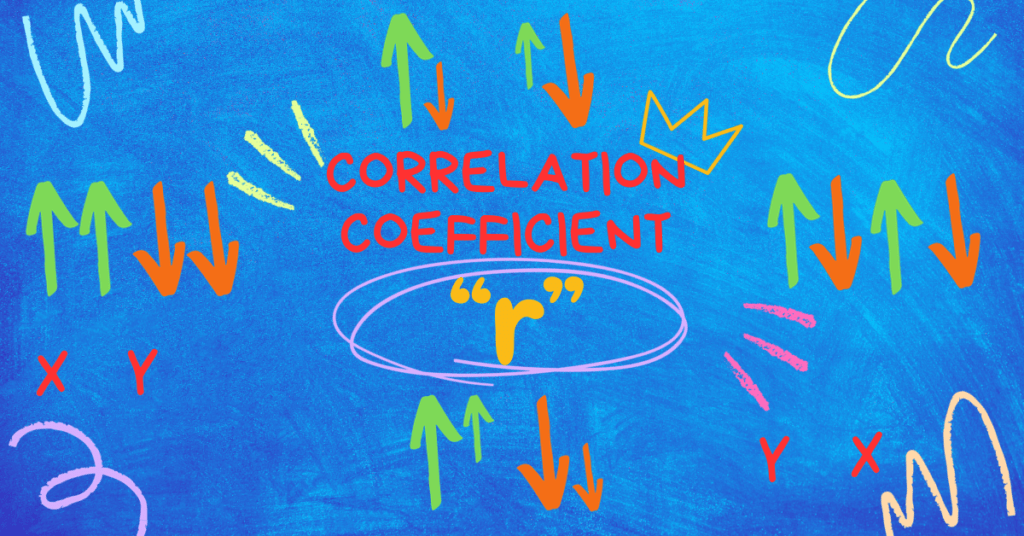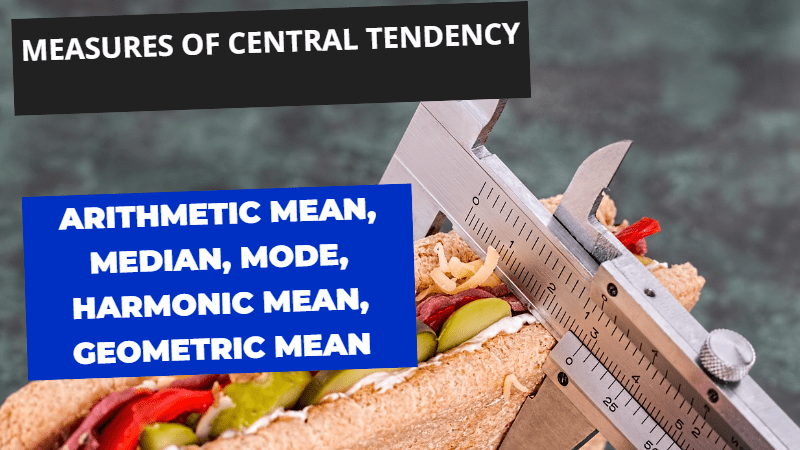Here, we are going to solve the Paper of Business Mathematics and Statistics, Solved Paper 2007, Punjab University, BCOM, ADCI in which Measures of Central Tendency, Measures of Dispersion, Correlation & Regression, Index Numbers, Matrix, Arithmetic Progression, Geometric Progression, Simultaneous Linear Equations, Annuity, Quadratic Equation is discussed and solved.
Table of Contents
Business Mathematics & Statistics, Solved Paper 2007, Punjab University, BCOM,ADCI
Solved by Iftikhar Ali, M.Sc Economics, M.Com Finance Lecture Statistics, Finance & Accounting
Q.1 Provide short answers for the following. Unnecessary details will be penalized. (a) Define median (b) What is probability? (c) What do you mean by principle of least square? (d) Define random variable. (e) Define range.
Answer:
(a) Median
Median is a positional average. It is most middle value of arrayed data after arranging it in ascending order. In ungrouped data, it is most central value whereas in grouped data, the formula is given below:
\[ \widetilde{X} = L + \frac{h}{f}\ \left( \frac{n}{2} – c \right)\ \]
Where L is lower Class Boundary, h = height of the class, f = frequency, n = ∑f & C = Cumulative Frequency
(b) Probability
Probability is a statistical measure and it is a measure of uncertainty which consists on occurrence or non-occurrence of an event. We can say that Probability calculates the chance of happening something or not happening something. Its answer always ranges between 0 and 1 both inclusive.
(c) Principle of Least-Square
Least square principle is a statistical principal which is used to find the best fitted line for a data set by minimizing the residuals. Least square regression equation is used for prediction in which one dependent variable and one or more than one independent variables are used.
If only one independent variable is used in the model, the model is called simple linear regression model whereas in multiple linear regression model, independent variables are more than one.
(d) Random Variable
Random variable is a type of variable whose value is not known. It may be discrete or continuous. It is discrete when it is countable and continuous when it is measurable.
(e) Range
Range is absolute measure of dispersion it is simply the difference between maximum value and minimum value of the variable. Its formula is Xm – X0.
Business Statistics
Section I
Q.2 Make a frequency distribution taking class as 1.20-1.49, 1.50-1.79, and so on:
3.20, 3.17, 2.87, 1.45, 1.49, 2.37, 2.86, 2.50, 1.67, 2.66, 3.18, 3.06, 2.56, 1.86, 1.99, 2.06, 2.45, 2.22, 3.10, 1.72, 2.04, 2.15, 2.45, 2.68, 2.75, 2.89, 1.14, 1.60, 1.54, 1.48
Solution:
Smallest Figure=1.14, Largest Figure = 3.20, h = 0.30
| Classes | frequency | Tally |
| 0.90—1.19 | 1 | I |
| 1.20—1.49 | 3 | III |
| 1.50—1.79 | 4 | IIII |
| 1.80—2.09 | 4 | IIII |
| 2.10—2.39 | 3 | III |
| 2.40—2.69 | 6 | IIIIII |
| 2.70—2.99 | 4 | IIII |
| 3.0—3.29 | 5 | IIIII |
| ∑f=30 |
Q.3 Find Mean & Median of the following data:
| Height(Inches) | 45–50 | 50–55 | 55–60 | 60–65 | 65–70 | 70—75 |
| No of Persons | 2 | 7 | 12 | 18 | 13 | 3 |
Solution
| Height Inches | f | X | fx | C.f |
| 45–50 | 2 | 47.5 | 95 | 2 |
| 50–55 | 7 | 52.5 | 367.5 | 9 |
| 55–60 | 12 | 57.5 | 690 | 21 |
| 60–65 | 18 | 62.5 | 1125 | 39 |
| 65–70 | 13 | 67.5 | 877.5 | 52 |
| 70–75 | 3 | 72.5 | 217.5 | 55 |
| 55 | 3372.5 | |||
| ∑f= | ∑fx= |
\[ \mathbf{A.M\ }\overline{\mathbf{X}}\mathbf{=}\frac{\mathbf{\sum fx}}{\mathbf{\sum f}}\mathbf{= \ }\frac{\mathbf{3372.5}}{\mathbf{55}}\mathbf{= 61.31\ }\ \]
Selection of class for median \[ \frac{\mathbf{n}}{\mathbf{2}}\mathbf{=}\frac{\mathbf{55}}{\mathbf{2}}\mathbf{= 27.5\ falls\ in\ c.f\ of\ 39\ so\ model\ class\ is\ 60 – 65\ \ }\ \]
\[ \mathbf{Median = L + \ }\frac{\mathbf{h}}{\mathbf{f}}\left( \frac{\mathbf{n}}{\mathbf{2}}\mathbf{- \ C} \right)\mathbf{= 60 + \ }\frac{\mathbf{5}}{\mathbf{18}}\left( \frac{\mathbf{55}}{\mathbf{2}}\mathbf{- \ 21} \right)\mathbf{= 61.80}\ \]
Q.4 The following table gives the aptitude test scores and productivity indices of 10 workers selected at random estimate.
| Aptitude Scores (X) | 60 | 62 | 65 | 70 | 72 | 48 | 53 | 73 | 65 | 82 |
| Productivity index (Y) | 68 | 60 | 62 | 80 | 85 | 40 | 52 | 62 | 60 | 81 |
Calculate Correlation Coefficient between aptitude scores and productivity index
Solution:
Formula
\[ \mathbf{r =}\frac{\frac{\mathbf{\sum xy}}{\mathbf{n}}\mathbf{- \ }\left( \frac{\mathbf{\sum x}}{\mathbf{n}} \right)\left( \frac{\mathbf{\sum y}}{\mathbf{n}} \right)}{\mathbf{Sx \times Sy}}\ \]
| S/No | X | Y | XY | X² | Y² |
| 1 | 60 | 68 | 4080 | 3600 | 4624 |
| 2 | 62 | 60 | 3720 | 3844 | 3600 |
| 3 | 65 | 62 | 4030 | 4225 | 3844 |
| 4 | 70 | 80 | 5600 | 4900 | 6400 |
| 5 | 72 | 85 | 6120 | 5184 | 7225 |
| 6 | 48 | 40 | 1920 | 2304 | 1600 |
| 7 | 53 | 52 | 2756 | 2809 | 2704 |
| 8 | 73 | 62 | 4526 | 5329 | 3844 |
| 9 | 65 | 60 | 3900 | 4225 | 3600 |
| 10 | 82 | 81 | 6642 | 6724 | 6561 |
| SUM | 650 | 650 | 43294 | 43144 | 44002 |
| ∑X = | ∑Y = | ∑XY = | ∑X² = | ∑Y² = |
\[ \overline{\mathbf{X}}\mathbf{=}\frac{\mathbf{\sum X}}{\mathbf{n}}\mathbf{=}\frac{\mathbf{650}}{\mathbf{10}}\mathbf{= 65\ ,\ }\overline{\mathbf{Y}}\mathbf{=}\frac{\mathbf{\sum Y}}{\mathbf{n}}\mathbf{=}\frac{\mathbf{650}}{\mathbf{10}}\mathbf{= 65\ }\ \]
\[ \mathbf{Sx =}\sqrt{\left\lbrack \frac{\mathbf{\sum}\mathbf{x}^{\mathbf{2}}}{\mathbf{n}}\mathbf{- \ }\left( \frac{\mathbf{\sum x}}{\mathbf{n}} \right)^{\mathbf{2}} \right\rbrack}\ \]
\[ \mathbf{Sx =}\sqrt{\left\lbrack \frac{\mathbf{43144}}{\mathbf{10}}\mathbf{- \ }\left( \mathbf{65} \right)^{\mathbf{2}} \right\rbrack}\ \]
\[ \mathbf{Sx =}\sqrt{\mathbf{4314.4 – 4225}}\ \]
\[ \mathbf{Sx =}\sqrt{\mathbf{89.4}}\ \]
\[ \mathbf{Sx = 9.455}\ \]
\[ \mathbf{Sy =}\sqrt{\left\lbrack \frac{\mathbf{\sum}\mathbf{y}^{\mathbf{2}}}{\mathbf{n}}\mathbf{- \ }\left( \frac{\mathbf{\sum y}}{\mathbf{n}} \right)^{\mathbf{2}} \right\rbrack}\ \]
\[ \mathbf{Sy =}\sqrt{\left\lbrack \frac{\mathbf{44002}}{\mathbf{10}}\mathbf{- \ }\left( \mathbf{65} \right)^{\mathbf{2}} \right\rbrack}\mathbf{\ }\ \]
\[ \mathbf{Sy =}\sqrt{\mathbf{4400.2 – 4225}}\ \]
\[ \mathbf{Sy =}\sqrt{\mathbf{175.2}}\ \]
\[ \mathbf{Sy = 13.23}\ \]
\[ \mathbf{r =}\frac{\frac{\mathbf{\sum xy}}{\mathbf{n}}\mathbf{- \ }\left( \frac{\mathbf{\sum x}}{\mathbf{n}} \right)\left( \frac{\mathbf{\sum y}}{\mathbf{n}} \right)}{\mathbf{Sx \times Sy}}\ \]
\[ \mathbf{r =}\frac{\frac{\mathbf{43294}}{\mathbf{10}}\mathbf{- \ }\left( \mathbf{65} \right)\left( \mathbf{65} \right)}{\left( \mathbf{9.455} \right)\mathbf{\times (13.23)}}\ \]
\[ \mathbf{r =}\frac{\mathbf{4329.4\ –\ 4225}}{\mathbf{125.08}}\ \]
\[ \mathbf{r =}\frac{\mathbf{104.4}}{\mathbf{125.08}}\ \]
\[ \mathbf{r = 0.834} \textbf{(Positive Relation)} \]
Q.5 Compute index number from the following data using Fisher’s Ideal Index Formula.
| Commodity | 1999 | 2000 | ||
| Price | Quantity | Price | Quantity | |
| A | 12 | 10 | 15 | 12 |
| B | 15 | 7 | 20 | 5 |
| C | 24 | 5 | 20 | 9 |
| D | 5 | 16 | 5 | 14 |
Solution:
| Commodity | 1999 | 2000 | ||||||
| Price Po | Quantity q0 | Price P1 | Quantity q1 | poqo | p1q1 | p1q0 | poq1 | |
| A | 12 | 10 | 15 | 12 | 120 | 180 | 150 | 144 |
| B | 15 | 7 | 20 | 5 | 105 | 100 | 140 | 75 |
| C | 24 | 5 | 20 | 9 | 120 | 180 | 100 | 216 |
| D | 5 | 16 | 5 | 14 | 80 | 70 | 80 | 70 |
| 425 | 530 | 470 | 505 | |||||
| ∑poqo= | ∑ p1q1= | ∑p1q0= | ∑poq1= | |||||
\[ \mathbf{Fishe}\mathbf{r}^{\mathbf{‘}}\mathbf{s\ Ideal\ Index\ 2000 =}\sqrt{\left( \frac{\mathbf{\sum}\mathbf{p}\mathbf{1}\mathbf{qo}}{\mathbf{\sum}\mathbf{poqo}}\mathbf{\ \times \ }\frac{\mathbf{\sum}\mathbf{p}\mathbf{1}\mathbf{q}\mathbf{1}}{\mathbf{\sum}\mathbf{poq}\mathbf{1}} \right)}\mathbf{\ \times \ 100}\ \]
\[ \mathbf{Fishe}\mathbf{r}^{\mathbf{‘}}\mathbf{s\ Ideal\ Index\ 2000 =}\sqrt{\left( \frac{\mathbf{470}}{\mathbf{425}}\mathbf{\ \times \ }\frac{\mathbf{530}}{\mathbf{505}} \right)}\mathbf{\ \times \ 100}\ \]
\[ \mathbf{Fishe}\mathbf{r}^{\mathbf{‘}}\mathbf{s\ Ideal\ Index\ 2000 =}\sqrt{\left( \mathbf{1.106\ \times \ 1.05} \right)}\mathbf{\ \times \ 100}\ \]
\[ \mathbf{Fishe}\mathbf{r}^{\mathbf{‘}}\mathbf{s\ Ideal\ Index\ 2000 = 107.73}\ \]
Business Mathematics
Section II
Q.6 (a) A mobile company in its 3rd year of existence produce 6000 sets and 9000 sets in 5th year. What is the production of the company in the first year? (b) 0.323232….. = p/q, where p and q are integers find the values of p and q.
Solution: (a) Arithmetic Progression
\[ \mathbf{a}_{\mathbf{3}}\mathbf{= 6000\ Sets,\ }\mathbf{a}_{\mathbf{5}}\mathbf{= 9000\ Sets}\ \]
\[ \mathbf{a}_{\mathbf{3}}\mathbf{=}\mathbf{a}_{\mathbf{1}}\mathbf{+ 2}\mathbf{d}\ \]
\[ \mathbf{a}_{\mathbf{5}}\mathbf{=}\mathbf{a}_{\mathbf{1}}\mathbf{+ 4}\mathbf{d}\ \]
\[ \mathbf{6000 =}\mathbf{a}_{\mathbf{1}}\mathbf{+ 2}\mathbf{d\ (i)}\ \]
\[ \mathbf{9000 =}\mathbf{a}_{\mathbf{1}}\mathbf{+ 4}\mathbf{d\ (ii)}\ \]
Multiply Equation (i) by 2 & eliminate d, we get:
\[ \mathbf{12000 =}{\mathbf{2}\mathbf{a}}_{\mathbf{1}}\mathbf{+ 4}\mathbf{d}\ \]
\[ \mathbf{\pm 9000 =}\mathbf{\pm a}_{\mathbf{1}}\mathbf{\pm 4}\mathbf{d}\ \]
\[ \mathbf{a}_{\mathbf{1}}\mathbf{= 3000\ Sets}\ \]
Solution: (b) Geometric Progression
\[ \mathbf{a}_{\mathbf{1}}\mathbf{= 0.32,\ r = 0.01}\ \]
\[ \mathbf{S}_{\mathbf{\infty}}\mathbf{=}\frac{\mathbf{a}_{\mathbf{1}}}{\mathbf{1 – r}}\mathbf{=}\frac{\mathbf{0.32}}{\mathbf{1 – 0.01}}\mathbf{=}\frac{\mathbf{0.32}}{\mathbf{0.99}}\mathbf{=}\frac{\mathbf{32}}{\mathbf{99}}\mathbf{=}\frac{\mathbf{p}}{\mathbf{q}}\ \]
\[ \mathbf{p = 32\ \&\ q = 99}\ \]
Q.7 If A= \[ \begin{bmatrix}1 & 4 \\5 & 3 \\\end{bmatrix},\ B = \ \begin{bmatrix}0 & – 2 \\1 & 2 \\\end{bmatrix}\ \] Required: A+B =B+A
Solution:
\[ \mathbf{A + B =}\begin{bmatrix}\mathbf{1 + 0} & \mathbf{4 + ( – 2)} \\\mathbf{5 + 1} & \mathbf{3 + 2} \\\end{bmatrix}\mathbf{=}\begin{bmatrix}\mathbf{1} & \mathbf{2} \\\mathbf{6} & \mathbf{5} \\\end{bmatrix}\ \]
\[ \mathbf{B + A =}\begin{bmatrix}\mathbf{0 + 1} & \mathbf{- 2 + 4} \\\mathbf{1 + 5} & \mathbf{2 + 3} \\\end{bmatrix}\mathbf{=}\begin{bmatrix}\mathbf{1} & \mathbf{2} \\\mathbf{6} & \mathbf{5} \\\end{bmatrix}\ \]
Proved that A + B = B + A
Q.8 (a) Solve the following simultaneous equations 465x + 75y = 615, 75x + 465y = 1005 (b) Solve the quadratic equation \[ x^{2} – 5x + 6 = 0\ \]
Solution (a)
\[ 465x\ + \ 75y\ = \ 615\ \ \ \ \ (i)\ \]
\[ 75x\ + \ 465y\ = \ 1005\ \ \ (ii)\ \]
Multiply equation (i) by 75 and (ii) by 465 to eliminate x
\[ \mathbf{34875\ x\ + \ 5625\ y\ = \ 46125}\ \]
\[ \mathbf{\pm 34875\ x\ \pm 216225\ y\ = \ \pm 467325}\ \]
\[ \mathbf{- 210600}\mathbf{y = – 421200}\ \]
\[ \mathbf{y =}\frac{\mathbf{421200}}{\mathbf{210600}}\mathbf{= 2}\ \]
Put y = 2 into equation (i) to get the value of x:
\[ \mathbf{465}\mathbf{x\ + \ 75}\mathbf{y\ = \ 615\ \ \ \ \ (i)}\ \]
\[ \mathbf{465}\mathbf{x\ + \ 75(2)\ = \ 615}\ \]
\[ \mathbf{465}\mathbf{x = 615 – 150}\ \]
\[ \mathbf{465}\mathbf{x = 465}\ \]
\[ \mathbf{x =}\frac{\mathbf{465}}{\mathbf{465}}\mathbf{= 1}\ \]
\[ \mathbf{x = 1\ \&\ y = 2}\ \]
Prove
\[ 465x\ + \ 75y\ = \ 615\ \]
\[ 465(1)\ + \ 75(2)\ = \ 615\ \]
\[ 615\ = \ 615\ \]
Solution (b)
\[ x^{2} – 5x + 6 = 0\ \]
\[ Here\ a = 1,\ b = – 5\ \&\ c = 6\ \]
\[ x = \frac{- b \pm \sqrt{b^{2} – 4ac}}{2a}\ \]
\[ x = \frac{- ( – 5) \pm \sqrt{{( – 5)}^{2} – 4(1)(6)}}{2(1)}\ \]
\[ x = \frac{5 \pm \sqrt{25 – 24}}{2}\ \]
\[ x = \frac{5 \pm 1}{2}\ \]
\[ x = \frac{5 + 1}{2} = \frac{6}{2} = 3\ \]
\[ x = \frac{5 – 1}{2} = \frac{4}{2} = 2\ \]
\[ So x={2,3} \]
Q.9 Mr. Masood deposits Rs. 500 at the end of each quarter. So as to accumulate a sum of Rs. 10,000 to purchase a refrigerator. If the interest rate is 5% compounded quarterly, how many such quarterly deposits he will have to make.
Solution:
Data:
Ordinary Annuity
\[ \mathbf{R = 500,\ \ F.V = 10,000,\ I\ = 5\%\ quarterly =}\frac{\mathbf{5}}{\mathbf{4}}\mathbf{= 1.25\%\ =}\frac{\mathbf{1.25}}{\mathbf{100}}\mathbf{= 0.0125,\ n = ?}\ \]
Formula
\[ \mathbf{F.V = R}\left( \frac{\mathbf{(1 + i)}^{\mathbf{n}}\mathbf{- 1}}{\mathbf{i}} \right)\ \]
\[ \mathbf{10,000 = 500}\left( \frac{\mathbf{(1 + 0.0125)}^{\mathbf{n}}\mathbf{- 1}}{\mathbf{0.0125}} \right)\ \]
\[ \frac{\mathbf{10,000}}{\mathbf{500}}\mathbf{=}\left( \frac{\mathbf{(1 + 0.0125)}^{\mathbf{n}}\mathbf{- 1}}{\mathbf{0.0125}} \right)\ \]
\[ \mathbf{20 =}\left( \frac{\mathbf{(1 + 0.0125)}^{\mathbf{n}}\mathbf{- 1}}{\mathbf{0.0125}} \right)\ \]
\[ \mathbf{20 \times 0.0125 =}\mathbf{(1 + 0.0125)}^{\mathbf{n}}\mathbf{- 1}\ \]
\[ \mathbf{0.25 =}\mathbf{(1 + 0.0125)}^{\mathbf{n}}\mathbf{- 1}\ \]
\[ \mathbf{0.25 + 1 =}\mathbf{(1 + 0.0125)}^{\mathbf{n}}\ \]
\[ \mathbf{1.25 =}\mathbf{(1.0125)}^{\mathbf{n}}\ \]
Taking log on both sides
\[ \mathbf{log\ \ (1.25) = \ n\ log\ (1.0125)}\ \]
\[ \mathbf{0.09691 = \ n\ 0.005395}\ \]
\[ \mathbf{n =}\frac{\mathbf{0.09691}}{\mathbf{0.005395}}\mathbf{= 18\ Approx}\ \]
You may also interested in the following:
Introduction to Statistics Basic Important Concepts
Measures of Central Tendency, Arithmetic Mean, Median, Mode, Harmonic, Geometric Mean
Business Statistics Solved Paper FBISE 2018 ICOM II, MCQS, Short Questions, Extensive Questions






